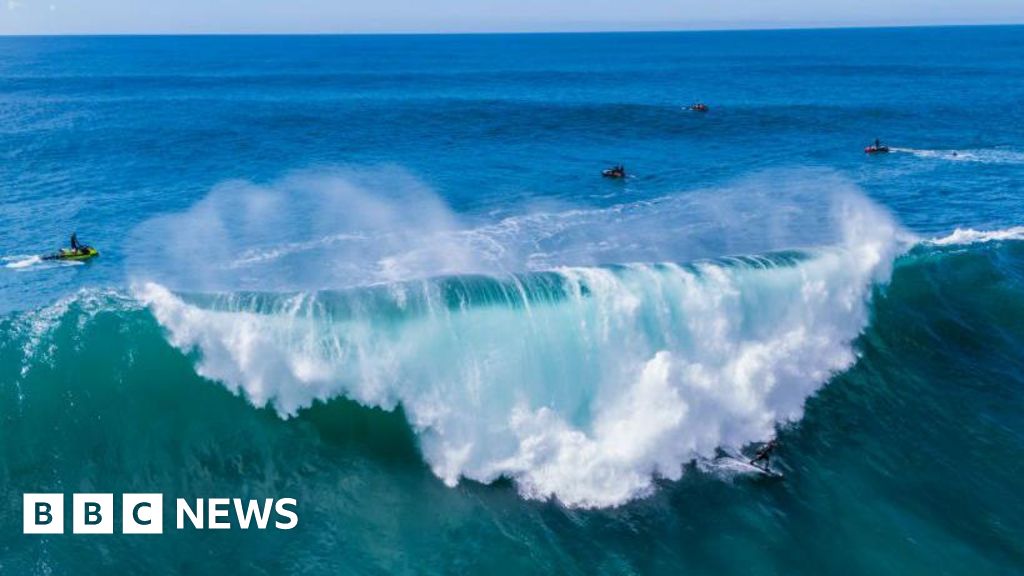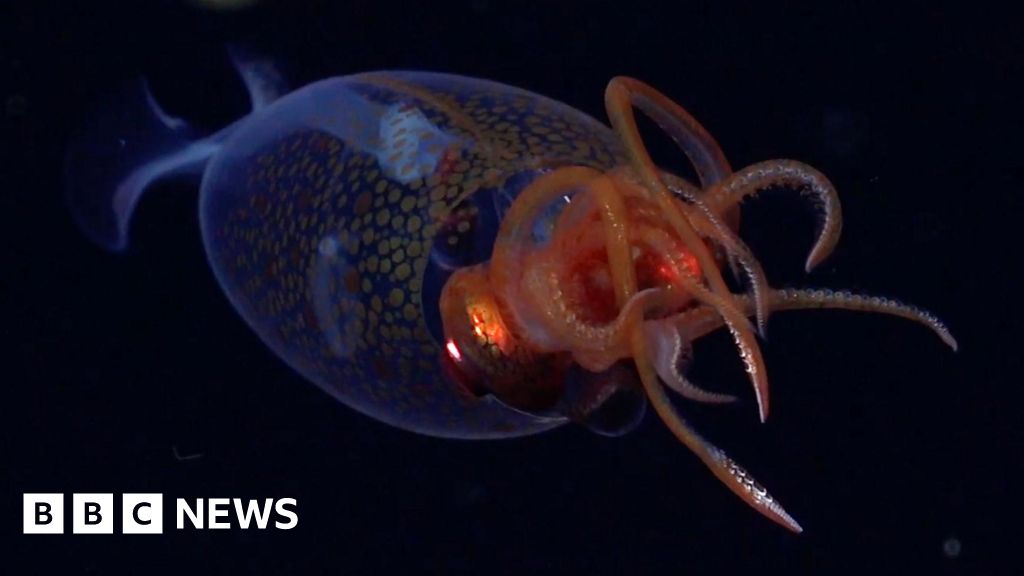ARTICLE AD BOX
image source, Anthony Hutchings
image caption, Spinosaurids. Ceratosuchops inferodios in the foreground and Riparovenator milnerae in the backgroundTwo new species of large predatory dinosaur have been discovered.
Palaeontologists at the University of Southampton confirmed the remains, found by fossil hunters on an Isle of Wight beach over several years, belonged to previously unknown species.
The carnivorous dinosaurs are thought to have been 9m (29ft) in length with 1m-long (3ft) skulls.
Researchers believe they roamed the south coast 125 million years ago.
The new discoveries - named Ceratosuchops inferodios and Riparvenator milnerae - belonged to the spinosaurid group - theropod dinosaurs characterised by hollow bones and three-toed feet.
image source, Chris Barker
image caption, Riparovenator milnerae is thought to have had a 9m-long skull similar to crocodilesFossil collectors initially found parts of two skulls before a team from the island's Dinosaur Isle Museum uncovered a large section of a tail.
It comes after the last spinosaurid skeleton, which belonged to Baryonyx, was discovered in a quarry in Surrey in 1983. Only single bones and isolated teeth had been found since.
PhD student Chris Barker, author of the University of Southampton study, said: "We found the skulls to differ not only from Baryonyx, but also from one another, suggesting the UK housed a greater diversity of spinosaurids than previously thought."
Co-author Darren Naish, an expert in British theropod dinosaurs, said: "We've known for a couple of decades now that Baryonyx-like dinosaurs awaited discovery on the Isle of Wight, but finding the remains of two such animals in close succession was a huge surprise."
image source, Chris Barker
image caption, The haul of bones was discovered on a beach near Brighstone, Isle of Wight, over a period of several yearsThe study also suggested how spinosaurids might have first evolved in Europe, before dispersing into Asia, Africa and South America.
The collection of about 50 bones will go on display at the Dinosaur Isle Museum in Sandown.
Curator Dr Martin Munt said the finds cemented the Isle of Wight's status as one of the top locations for dinosaur remains in Europe.
Follow BBC South on Facebook, Twitter, or Instagram. Send your story ideas to south.newsonline@bbc.co.uk.
The BBC is not responsible for the content of external sites.

 3 years ago
73
3 years ago
73








 English (US) ·
English (US) ·